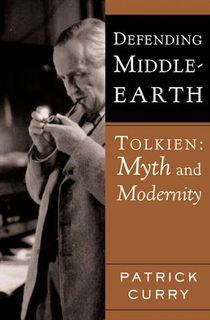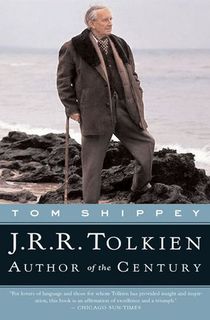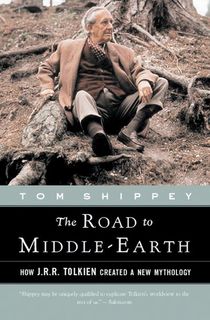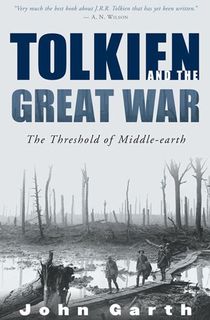A fellowship of fans crowded the foyer of New York City’s Morgan Library & Museum one recent morning as the doors opened to “Tolkien: Maker of Middle-earth,” an exhibit of J.R.R. Tolkien’s original artwork, writings, and more. The exhibition is the most extensive public display of original Tolkien material ever in the U.S., drawn from the Tolkien Archive at the Bodleian Library in Oxford, Marquette University Libraries, the Morgan, and various private lenders.
Ticket-holders enter the exhibit space through a round hobbit-door, beyond which rises a large mural of the familiar landscape of Hobbiton-across-the-Water. Many other large murals of Tolkien’s work are mounted around the exhibit, but the original artwork is quite small—most of it about six inches wide by eight high. Quite surprising, when one appreciates all its details!
RELATED: 7 Must-Read Tolkien Books for The Lord of the Rings Fans
The exhibit explores Tolkien’s legacy as creator and world-builder. Largely for his own enjoyment—he never contemplated a career as an author—Tolkien developed his skills as linguist, artist, mapmaker, and scholar to invent the vast landscape and history of Middle-earth.
One long wall is devoted to small sketches and paintings that Tolkien created as a student at Oxford. The pieces served as illustrations for his poetry, and were collected in a slim hardcover sketchbook that Tolkien titled “The Book of Ishness,” also on display. Even some of his paintboxes and drawing pencils survive!
RELATED: 10 Classic Fantasy Books No Reader Should Miss
One impressive piece is the dust jacket design for the original edition of The Hobbit, the iconic blue, black and g reen wrap-around cover published by Allen & Unwin in 1937. As revealed by handwritten notations in the margins of the design, Tolkien had wanted to use red for the sun and the flying dragon—but the publisher nixed that idea in order to save money, and the additional color was dropped.

RELATED: J.R.R. Tolkien: 15 Interesting Facts About the Man Behind Middle-earth
Tolkien’s distinctive handwriting and calligraphy are on display in the form of letters, poetry, and original manuscript pages. One fascinating example is an early draft of a scene from The Two Towers. As originally conceived, Treebeard the Ent was in league with the enemy, as revealed in Tolkien’s notes to himself (written in the elven language Tengwar) at the bottom of the manuscript page.
Other Tolkien treasures include a number of family photographs, several of the hand-painted Christmas cards he made for his children each year, and the gray-and-scarlet gown connoting the doctorate of literature awarded to Tolkien by Oxford in 1972—an honor he said he valued more than the Order of the British Empire he also received.
The exhibit closes in New York on May 12.
Related: 11 of the Most Important The Lord of the Rings Quotes

J. R. R. Tolkien (1892–1973), The Shores of Faery, 10 May 1915, watercolor, black ink, pencil. Tolkien Trust, MS. Tolkien Drawings 87, fol. 22r. © The Tolkien Trust 1995.
Want to learn more about the man behind Middle-earth? Download one of these fascinating Tolkien books today!
This post is sponsored by Open Road Media. Thank you for supporting our partners, who make it possible for The Portalist to celebrate the sci-fi and fantasy stories you love.
Featured image credit: J. R. R. Tolkien (1892–1973), Bilbo comes to the Huts of
the Raft-elves, July 1937, watercolor, pencil, white body color. Bodleian Libraries, MS. Tolkien Drawings 29. © The Tolkien Estate Limited 1937.




